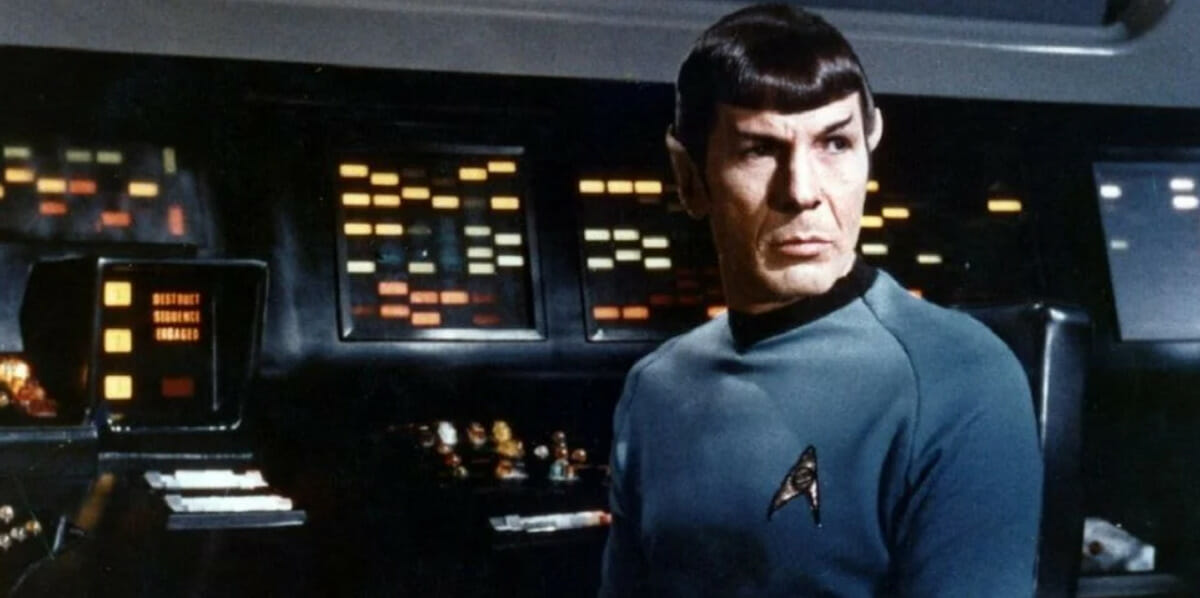Star Trek: The Original Series, the seminal sci-fi series created by Gene Roddenberry, debuted in September 1966. Pitched to Desilu Productions as “Wagon Train to the stars,” the show survived a rejected pilot and made it to air on NBC before being canceled after just three seasons. Nevertheless, the series gained a cult following in the years that followed, eventually being revived via half a dozen movies and spawning an ever-increasing number of small-screen sequels.
The influence of the series is hard to overstate: not only has the franchise become inextricable from fandom and comic conventions in the 1970s, NASA’s first space shuttle, the test orbiter Enterprise, was named after the hero ship of The Original Series thanks to a letter-writing campaign staged by fans of the series.
It isn’t just the Enterprise that entered the public imagination either. One of the best-known characters introduced in the series is Mr. Spock (Leonard Nimoy), the first officer of the U.S.S. Enterprise under Captain James T. Kirk (William Shatner). A stoic figure (especially when compared to the passion of his character foil, Kirk), Spock’s distinctive pointy-eared, flamboyantly eye-shadowed appearance coupled with his sonorous monotone made him a fan-favorite in a crew that was already stacked with fan-favorites.
Throughout his presence in the narrative, Spock’s central conflict is his long struggle to reconcile the two parts of his personality: human and Vulcan. However, while Spock may view his desire to purge his feelings purely motivated by his Vulcan heritage, few conflicts could be more human than the desire to understand, control, or even overcome one’s emotions. As such, while no one with green Vulcan blood in their veins may actually be living on Earth
In Star Trek: The Original Series (and the first entries in the Star Trek movie franchise), Spock’s inability to resolve these two uneasy factions lead the science officer to experience deep internal conflict, which affects both his relationships with those around him and his ability to achieve his larger goals. However, after the events of Star Trek IV: The Voyage Home, which was directed and co-written by Nimoy, Spock has managed to find internal peace, which ultimately allows him to affect the course of history on both of his home worlds.

The S’chn T’gai Clan
An important foundation for Spock’s character is the fact that he was born to a human mother, Amanda Grayson (Jane Wyatt), and a Vulcan father, Sarek (Mark Lenard). However, the ostensibly diametrically opposed philosophies to which each of his home worlds subscribe create in Spock an innate conflict that takes more than a lifetime to resolve. Vulcans have a singular relationship with emotions: while the majority do experience them, they do not express them, keeping them in check using logic and meditation.
In certain scenes, we see how young Vulcans contribute to their culture’s emotionless heritage by mocking Spock for being a “barbarian” and an “emotional Earther.” By contrast, while science and logic are obviously integral to Earth’s galactic exploration, humanity continues to embrace emotion: look at the passion of Captain Kirk or the fact that Captain Jean-Luc Picard keeps Counselor Deanna Troi beside him on the bridge.
This internal friction is visible in the earliest episodes of The Original Series. For example, in the episode “The Naked Time”, the crew of the Enterprise are contaminated by a complex chain of molecules that causes their inhibitions to be lowered. As a result, Spock finds his emotions more difficult to control than ever, and eventually confesses that he’s humiliated by his friendship with Kirk.
It isn’t just his relationships with humans that are strained by his internal conflict, either. In “Journey to Babel,” it’s immediately clear that he has issues with his father, who seems to disapprove of the fact that he chose to join Starfleet instead of the Vulcan Science Academy. This is another example of how Spock’s two home worlds are set against one another (and by seeing that it is Sarek who underscores this ultimatum, it’s not hard to imagine from whence Spock internalized this dichotomy, especially after watching Sarek snap at Amanda that he isn’t proud of his son, as “pride is a human emotion”).
This internal character conflict hadn’t reached any sort of stable situation when the series was canceled. But when a Saturday morning cartoon sequel series, Star Trek: The Animated Series, debuted in September 1973, the conflict between Spock’s homeworlds continued to play a part in the narrative.
In “Yesteryear,” the second episode of The Animated Series, thanks to the Guardian of Forever, we witness an event involving Spocky’s childhood pet, a “teddy bear” (with six-inch fangs) called a sehlat, which took place on Vulcan when Spock was a child. In it, he is erased from the timeline when a change in the past causes him to die in childhood, during the “kahs-wan ordeal.” The Vulcan rite of kahs-wan originated in the time before Vulcans had adopted logic as a defining feature, and instead were a more warrior-like species.

Thanks to the fact that this time travel is being accomplished via the Guardian of Forever (the sentient time portal first seen in the Harlan Ellison-penned The Original Series season one episode “The City on the Edge of Forever”), Spock is able to avoid temporal eradication. This allows him to travel back in time to before he died, meeting a younger version of Sarek, who is ignorant of his true identity. Sarek is embarrassed by his young son’s “unfortunate display of emotion,” and tells the older Spock as much. At the climax of this episode, the foundations of the human inferiority complex laid by Sarek in Spock’s young mind are solidified when the child must make the incredibly difficult choice to euthanize his pet sehlat, I-Chaya, rather than allow him to live a longer life of suffering. By putting I-Chaya to sleep, he embraces his father’s Vulcan way of life: one ostensibly based less on emotion and more on logic (but it’s worth noting that it’s also the outcome one would arrive at if the decision was motivated by compassion rather than logic).
But in spite of his attempts to rebuff those who tell him he does not belong, Spock’s peers regularly go out of their way to ensure he remembers that he isn’t one of them. In “Yesteryear,” we saw how Vulcans ostracized him throughout his early life. When he’s among humans on the Enterprise, even his close friend Doctor McCoy won’t ever let him forget that he bleeds green – he is, on a fundamental level, different from those around him.
The story continued a few years later in the opening scenes of 1979’s Star Trek: The Motion Picture. Here, we see that in spite of Spock’s leaving his career in Starfleet after the Enterprise’s five-year mission (depicted in The Original Series * and *The Animated Series), the Vulcans remain no more accepting of Spock than humanity has been. As we see Spock attempting to complete the Vulcan rite of Kolinahr, or the achievement of total Vulcan logic, it becomes clear that the Vulcans will never accept him as one of their own. Instead, he fails passage of the rite, because his human heritage leaves him unable to purge all emotion and achieve a state of truly unemotional logic. Ashamed at his failure to overcome his humanity (and ashamed to admit he’s ashamed), Spock returns to Starfleet.
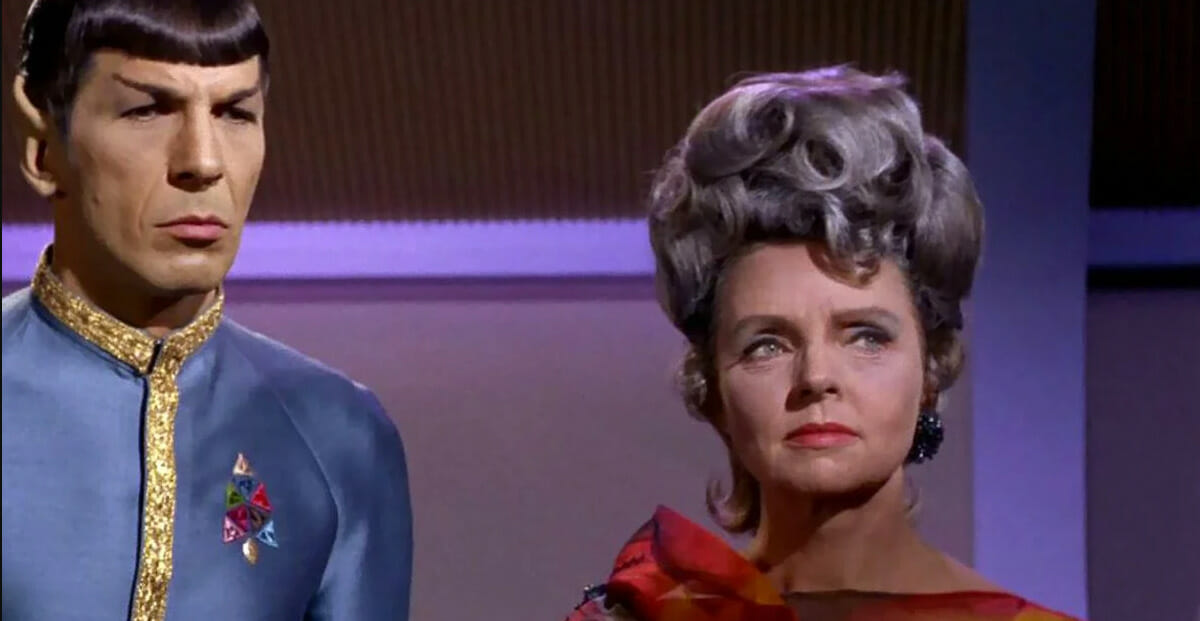
While his fellow human Starfleet officers are overjoyed to have him as a member of the crew once again, Spock’s inability to display warmth leaves even his closest friends a little disconcerted. However, in a scene improvised by Nimoy which was omitted from the theatrical release but included on video, a single tear rolls down Spock’s cheek as he weeps for V’Ger “as a brother.” This makes it evident that Spock’s failure to purge his emotions during the rite of Kolinahr was in some ways fortuitous, as without emotion, Spock may not have been able to advocate on the entity’s behalf.
In the following movies, Spock attempts to resolve his internal imbalance. In 1982’s Star Trek II: The Wrath of Khan, Spock’s actions once again fall more towards the Vulcan side of the equation, following the example set by his father: it is logical, after all, that the needs of the many outweigh the needs of the few. In the climactic scene, he makes the Vulcan decision to sacrifice himself in order to save the other members of the Enterprise crew. But just like the decision he made as a child to euthanize his pet sehlat, this “purely logical” decision aligns with compassion: some of Spock’s final words are an open avowal of friendship for Kirk.
Over the course of 1984’s Star Trek III: The Search for Spock, it’s up to the surviving crew members to steal the Enterprise out of space dock and travel to the Genesis Planet in order to rescue the resurrected Spock, a mission in which they are successful. However, even this literal death and rebirth has not allowed Spock to resolve his internal imbalance.
This fact is made clear in the opening scenes of 1986’s Star Trek IV: The Voyage Home.
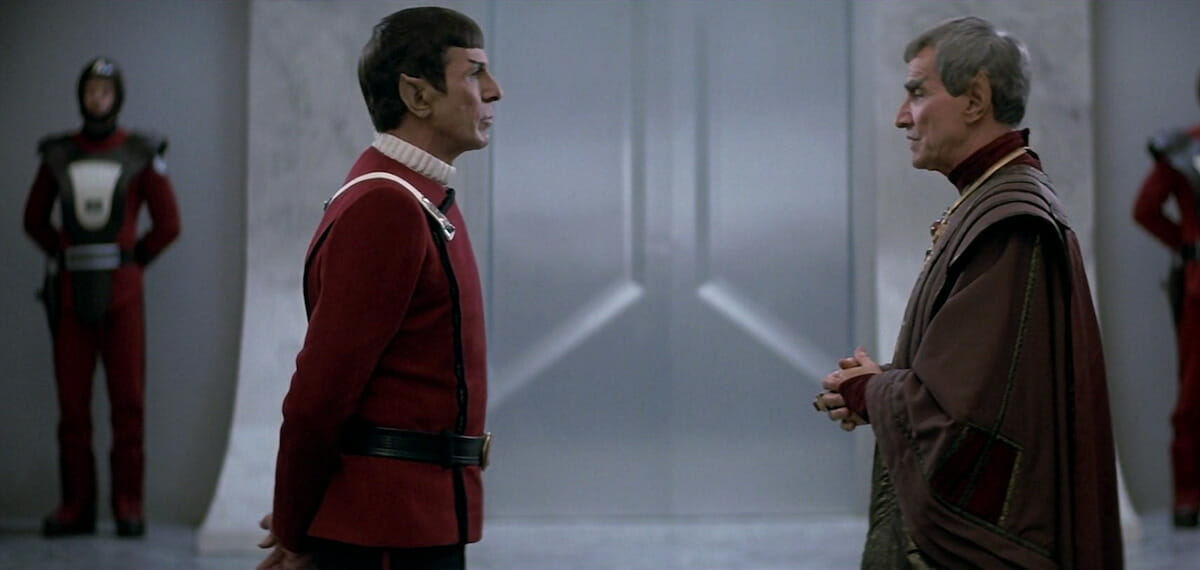
The Voyage Home
As The Voyage Home begins, Kirk and the rest of the human crewmembers are gathered together and discussing their situation after three months in exile on Vulcan… However, in spite of the fact that he has had his memory restored, Spock keeps himself well removed from the group, standing on the horizon and watching the meeting of his friends from a removed position. Even when Spock’s unemotional return to the Enterprise in The Motion Picture is considered, this seems a bit cold.
The next scene shows us how Spock has been working through his recovery and revitalizing his mental facilities. It is demonstrated that Spock’s intelligence and logic has been restored in spite of the trauma of his death and resurrection, and he fields the scientific questions his computer spouts with ease… but when it inevitably arrives at the question “how do you feel,” Spock finds himself at a loss.
It is at this point that Amanda, his human mother, arrives to counsel him. We discover that she has played an essential role in helping Spock find himself again, nursing him through his recovery. It is especially important that this scene, the only one which Spock shares with his human mother in the movie, takes place on Vulcan: it will demonstrate just how inextricable the two “halves” of Spock’s heritage actually are.

Over the course of The Voyage Home, Spock comes to understand his unique position in the cosmos. It is only because of his Vulcan intellect that he is able to perform the mathematical calculations that enable the crew of the Enterprise to travel back through time to 1980s San Francisco, and once they arrive there, it is Spock’s Vulcan mind-meld that allows him to communicate with George and Gracie, discover the latter is pregnant, and presumably, help the humpback whales understand the fantastic circumstances at hand.
However, without the human elements of Spock’s personality – namely, his friendship with Kirk, which he cites as a source of shame way back in “The Naked Time” – the mission would have failed. Furthermore, as discussed earlier in the film, it was only the Enterprise crew’s very human feelings for Spock that led to his rescue from the Genesis Planet, the restoration of his “living spirit,” and subsequent return to Earth in the first place. Without both the human and Vulcan elements of Spock’s life, the actions he undertakes on 1980s Earth could never have come to pass (and by extension, humanity would have gone extinct in the 2260s).
Spock demonstrates an understanding of this fact in a scene near the conclusion of the movie which bookends the scene he shared with Amanda in the opening of The Voyage Home. Rather than meeting with his human mother on Vulcan, Spock is now meeting with his Vulcan father on Earth. To drive home the fact that Spock has managed to find resolution within for the conflict that was borne of his inability to reconcile his two home worlds, he gives Sarek the answer to the question that had stumped him in Amanda’s presence on Vulcan.
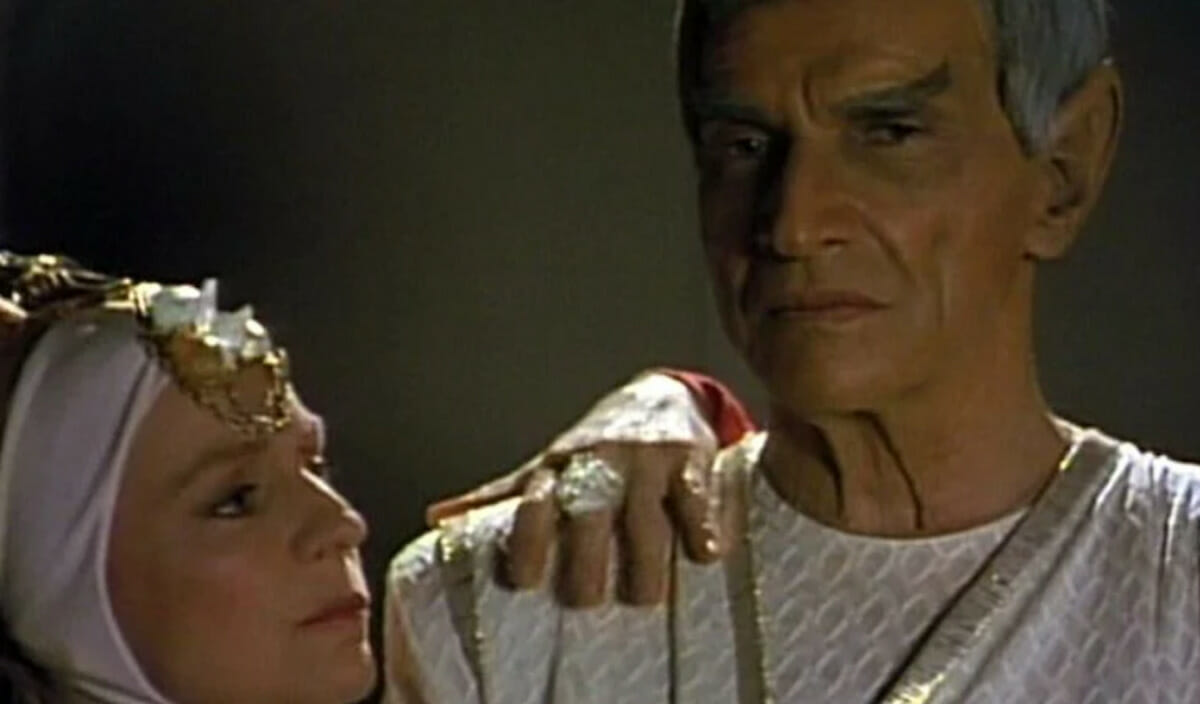
“Tell her, “I feel fine,’” Spock declares. This declaration is more potent when the context from The Original Series and The Animated Series is considered: it is especially important that Spock makes this declaration to his father, who has personally renounced all human emotion. The message is not just for Amanda, literally telling her she is fine, but it is also for Sarek, making it clear that Spock does indeed experience the emotions entailed by his human heritage… and he no longer experiences shame in admitting this fact to himself and his father.
In his 1995 memoir I Am Spock, Nimoy wrote that the scene “marks for the character a moment of true integration of both of his halves – Vulcan and human,” a process he identified as the character’s “Finale Plain.”
Unification
Once Spock has achieved this internal resolution in The Voyage, we see in the sequels that follow that he is able to begin focusing on resolving external issues that plague the Federation.
Thanks to Vulcan biology (which McCoy would never allow Spock to forget), both Spock and his father enjoy an extended lifespan, surviving into the era of Star Trek: The Next Generation, which debuted in 1987 and is set roughly 100 years after The Original Series. Like his son, Sarek is an accomplished ambassador. However, unlike his son, who is eventually able to better navigate his human emotions after The Voyage Home, Sarek never achieves this degree of internal resolution.

This is made evident in an episode from Next Gen’s third season, “Sarek,” in which the aging Vulcan takes part in one final diplomatic mission. As the elderly Sarek begins to lose control of higher mental faculties, it is revealed just how filled with emotional internal turmoil the seemingly placid Vulcan dignitary actually proves to be… and it is clear that this is a deep source of shame. Unlike Spock, Sarek is never able to make peace with his emotions, and they overwhelm him until the time of his death.
However, in the Next Generation episode “Unification,” Spock is once again applying the lessons that he learned through his own internal unification in order to help the external world: this time, he’s turning his considerable intellect and now even more voluminous experience towards an effort to broker peace between the two divergent parts of his own home world: Vulcan and Romulus.
While the peace talks may not find resolution in the 2370s, Spock is nevertheless able to take the lessons he has learned about resolving differences between logic and emotion and impart them, providing an essential rung in the ladder towards the unification of the two warring planets.
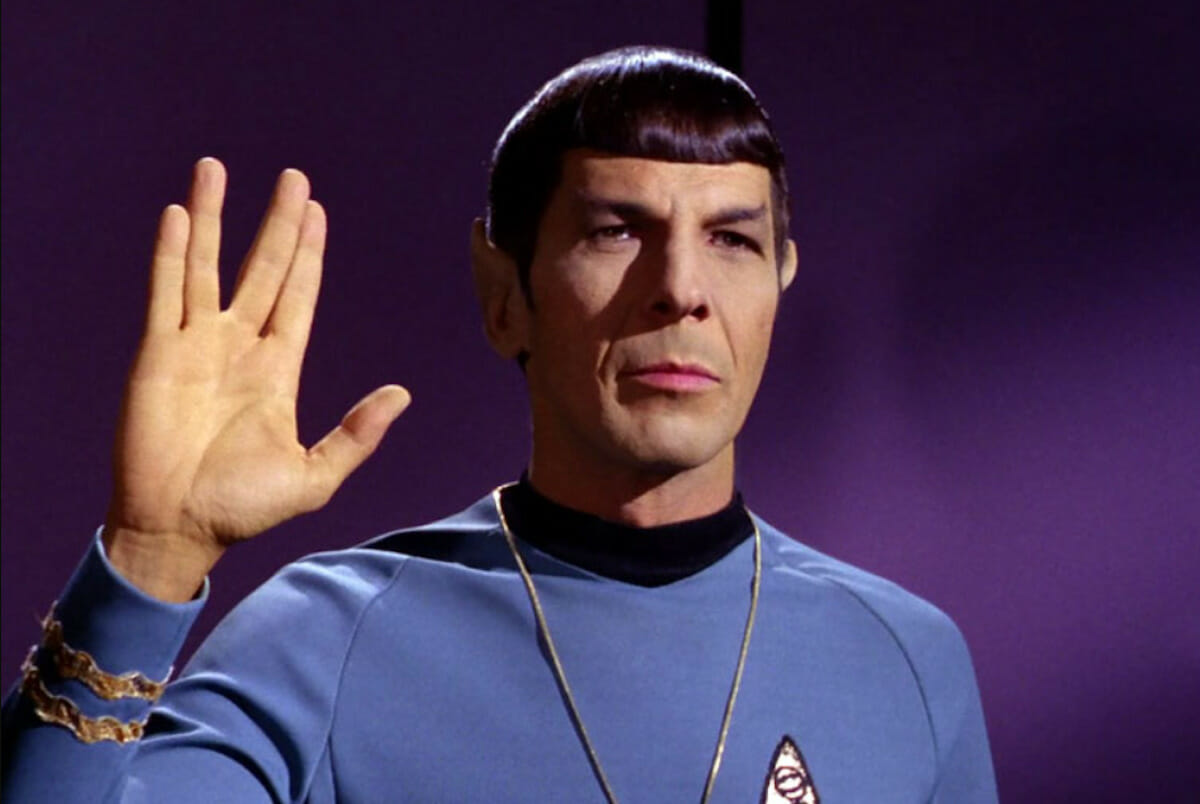
Although they begin as a source of great humiliation for Spock, the human emotions of the Enterprise’s first officer eventually evolve to become a source of strength for the iconic character, offering insight that affords him unparalleled diplomatic perspective. While this perspective is hard-won, and takes (literally) more than a lifetime to be developed, it embodies a powerful demonstration of how resolving internal conflict can change not only the world inside, but the worlds outside, as well.
Spock’s disinclination to accept his feelings is understandable, but over the course of his narrative, he demonstrates how accepting and embracing emotion is integral in facilitating his engagement with the wider universe. While we may not be journeying to the stars, for those of us who currently remain earthbound, understanding this lesson can help us transcend limitations and go where we’ve never gone before.
